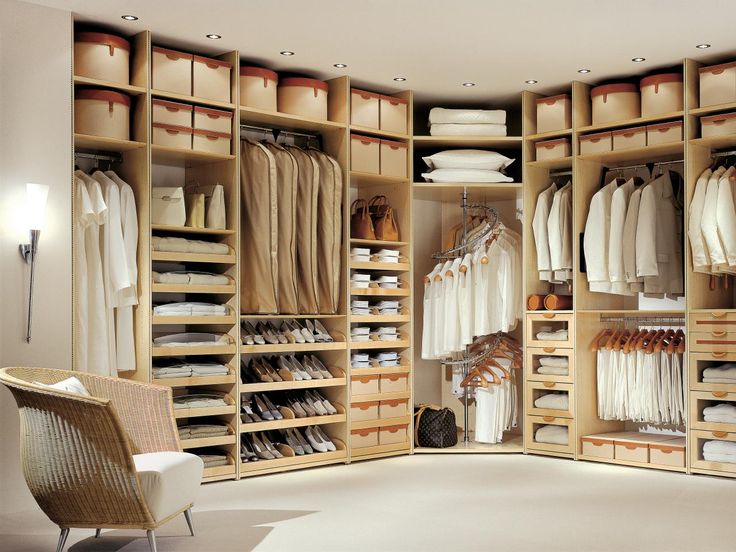Crafting Custom Closets: A Guide to Material Selection and Construction Techniques
by siteadmin

Custom closets offer homeowners the opportunity to maximize space, enhance organization, and elevate the aesthetic appeal of their living spaces. From walk-in wardrobes to reach-in closets, the design and construction of custom storage solutions require careful consideration of materials and construction techniques. In this blog post, we’ll explore the essential aspects of material selection and construction techniques used by custom closet designers to create functional, stylish, and durable storage solutions.
Material Selection:
- High-Quality Wood: Wood is a popular choice for custom closets due to its durability, versatility, and aesthetic appeal. Common wood species used in custom closet construction include:
- Hardwoods such as oak, maple, cherry, and walnut offer durability and a timeless elegance that adds warmth and character to any space.
- Softwoods like pine and cedar are more affordable options and can be stained or painted to achieve a desired finish.
- Engineered Wood Products: Engineered wood products, such as medium-density fiberboard (MDF) and plywood, are widely used in custom closet construction for their stability, uniformity, and cost-effectiveness. These materials are composed of wood fibers or veneers bonded together with adhesives, resulting in strong, durable panels that resist warping, swelling, and shrinkage.
- Laminate and Melamine: Laminate and melamine are popular surface materials for custom closet components such as shelves, drawers, and cabinet doors. These synthetic materials offer a wide range of colors, patterns, and finishes, including woodgrain, matte, and high-gloss options. Laminate and melamine are durable, easy to clean, and resistant to scratches, stains, and moisture, making them ideal for high-traffic areas like closets.
Construction Techniques:
- Custom Millwork: Custom closet design often involves precision millwork to create tailored solutions that fit the unique dimensions and layout of each space. Skilled carpenters use techniques such as cutting, routing, and joinery to fabricate custom components such as shelves, drawers, and hanging rods. By customizing each element to fit seamlessly within the closet footprint, designers maximize storage capacity and optimize functionality.
- Modular Components: Modular closet systems consist of pre-designed components that can be mixed and matched to create versatile storage configurations. These systems typically include adjustable shelves, hanging rods, and drawer units that can be reconfigured as needed to accommodate changing storage needs. Modular components are manufactured to standard sizes and specifications, allowing for easy installation and customization without the need for extensive on-site fabrication.
- Hardware and Accessories: Hardware and accessories play a crucial role in custom closet construction, providing functionality, durability, and style. Drawer slides, hinges, and handles should be selected for their quality, smooth operation, and compatibility with the overall design aesthetic. Additionally, accessories such as pull-out shoe racks, tie and belt organizers, and jewelry trays enhance organization and accessibility, allowing homeowners to personalize their closet space to suit their lifestyle and preferences.
Material selection and construction techniques are key considerations in the design and fabrication of custom closets. By choosing high-quality materials, such as hardwoods, engineered wood products, and laminate surfaces, designers can create durable, stylish, and functional storage solutions that stand the test of time. Whether utilizing custom millwork for bespoke solutions or modular components for flexibility and ease of installation, custom closet designers employ a variety of techniques to optimize space, enhance organization, and elevate the overall aesthetic of any home.
Custom closets offer homeowners the opportunity to maximize space, enhance organization, and elevate the aesthetic appeal of their living spaces. From walk-in wardrobes to reach-in closets, the design and construction of custom storage solutions require careful consideration of materials and construction techniques. In this blog post, we’ll explore the essential aspects of material selection and…
Recent Posts
- Carpenters’ Corner: Exploring Essential Woodworking Tools and Their Uses
- Pergolas: Enhancing Outdoor Spaces and Reducing Stress
- Choosing the Right Installation Method for Flooring: A Comprehensive Guide
- Understanding Color Psychology in Flooring: Transform Your Space with the Right Hues
- Elevate Your Space: Custom Closets Embracing Design Trends and Inspirations
